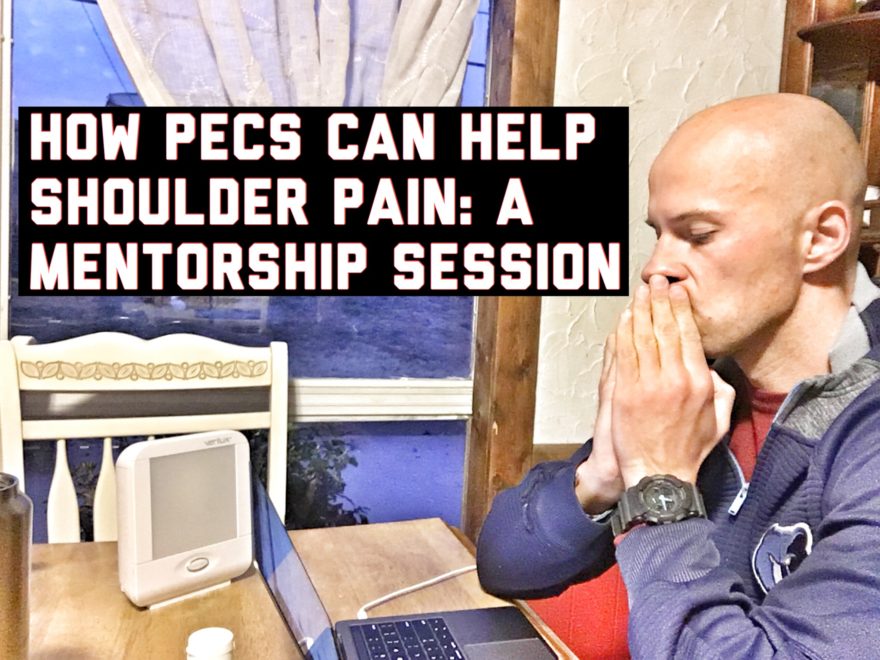I recently did a mentorship session with my good friend, movement consultation partner, functional medicine guru, and #bae, Dave Rascoe from Method Strength.
Dave and I collaborated on a client of his, and we used one of our mentorship sessions to talk through my decision-making process.
We talked about a variety of topics, including theoretical underpinnings that influenced my decisions, the assessment process, exercise selection, and so much more.
If you like what you see, want to improve your coaching skills, want to make better clinical decisions with your patients, and so much more, you can join my personalized mentorship program by filling out the form below the video. You can also learn more about the program here.
Enjoy the video, and read the case summary and topics mentioned in the talk below to get a glimpse into my thought process.
Fill out the form below to sign up for the mentorship program.
Here were a couple links and videos of things discussed in this session.
Here are some posts on the infrasternal angle:
You can also get the most in-depth discussion on the infrasternal angle by subscribing to my newsletter in the link below:
[yikes-mailchimp form=”1″ submit=”Yes, I want to know it all!!!!!”]
Here is the glute-biased dorsal rostral thoracic expansion, a great move for people with narrow infrasternal angles and hip external rotation limitations
The glute-biased straight leg raise crossovers serve a similar purpose, as the above activity, only adding a rotational bias to the movement.
Here were the two performance tests Dave and I discussed. First up is the Active Midstance Test, a test I use to help me assess how well one can coordinate movements in all three planes simultaneously:
Next up is the Copenhagen Adduction Test. I use this test to see how well one coordinates in the frontal plane, as well as test fatigability in this plane.
Table of Contents
Case Report: The Crossfitter with Shoulder Pain
Subjective
This client reports developing insidious right shoulder pain. Her symptoms started out as only slightly bothersome, then were aggravated after snatching 160 kilograms (side note: Daummmmn)
These movements below are what reproduce her pain:
- Reaching behind the back (e.g. for something in the backseat)
- Sleeping directly on her shoulder
- Holding a milk jug
Past Medical History was unremarkable aside from a surgery to place a plate in her left hand when she was younger.
Objective Findings
I always try to find a movement that reproduces the patient’s pain that does not necessarily impact my clinical decision making, but does give the patient something meaningful to come back to.
For this client, that was shoulder abduction.
Below here is the other objective findings.
Test | Left | Right |
Toe Touch | Full | |
Toe touch to squat | Full | |
Seated Trunk Rotation | 30 degrees | 30 degrees |
Seated Hip External Rotation | 25 degrees | 25 degrees |
Seated Hip Internal Rotation | 70 degrees | 60 degrees |
Infrasternal Angle | 45 | symmetrical |
Straight Leg Raise | 120 degrees | 130 degrees |
Shoulder Flexion | 180 degrees | 180 degrees |
Shoulder External Rotation | 105 degrees | 110 degrees |
Shoulder Internal Rotation | 85 degrees | 60 degrees (painful) |
Shoulder Horizontal Abduction | 60 degrees | 60 degrees |
Obers Test | Positive | Negative |
Hip Abduction | 80 degrees | 80 degrees |
Treatment
Exercise 1: Diamond Lazy Bear
This activity aims to incorporate pecs and internal obliques to reduce the anteroposterior dimensions of the ribcage and expand the lateral dimensions, thus favorably impacting shoulder range of motion
Post-treatment testing results
The patient had no pain with shoulder abduction.
Test | Left | Right |
Shoulder Internal Rotation | 90 degrees | 85 degrees (no pain) |
Infrasternal Angle | 80-90 degrees | symmetrical |
Hip External Rotation | 45 degrees | 45 degrees |
Obers | Negative | Negative |
Exercise 2: Sidelying Pec Twist
This activity works similarly to the diamond lazy bear, only pec activity is emphasized unilateral and with rotational bias.
Post-treatment testing results
Shoulder internal rotation was near-full on the right.
Sum Up
There is one of many individual iterations of a mentorship session. We problem solved to enhance understanding, and ultimately enhance the client’s outcome.
To summarize
- The goal is to reshape the ribcage in a position that is opposite of what the client currently exhibits.
- Pecs help narrow the anteroposterior dimensions of the ribcage.
- Serratus anterior externally rotates the ribcage.
- transversus abdominis internally rotates the ribcage.
- Narrow infrasternal angle is best impacted in the sagittal and transverse plane.
- Wide infrasternal angle is best impacted in the sagittal and frontal planes
- Bias exercise into positions that the client cannot achieve.
What does your clinical thought process look like? Comment below and make your contribution.

